In this post, we’ll cover 4 tools that allow you to run anonymous surveys in Microsoft Teams, including:
We’ll start with Geekbot — our free tool for running one-time or recurring anonymous surveys in Microsoft Teams.
Specifically, we’ll go over how Geekbot lets you:
- Create anonymous or public surveys in Microsoft Teams.
- Include various questions and response types, like multiple choice, plain text, and numeric.
- Schedule when your surveys get sent and who receives them, and more.
Note: Click here to create a free Geekbot account. All our features are free for teams with up to 10 active participants. For larger teams, pricing is $2.50 per user on the annual plan and $3.00 per user on the monthly plan.
1. Geekbot

Geekbot is our asynchronous meeting tool for Microsoft Teams. Beyond surveys and polls, You can use it to run asynchronous standup meetings, retrospectives, and more.
However, in this article, we’ll focus on how to run anonymous Microsoft Teams surveys with Geekbot in 4 easy steps.
Note: Click here to create a free Geekbot account and follow along to create your first anonymous survey in Microsoft Teams.
Step 1: Create an Anonymous Survey and Write Down Your Questions
First, open our template screen and click on “Build your own” (top-right).
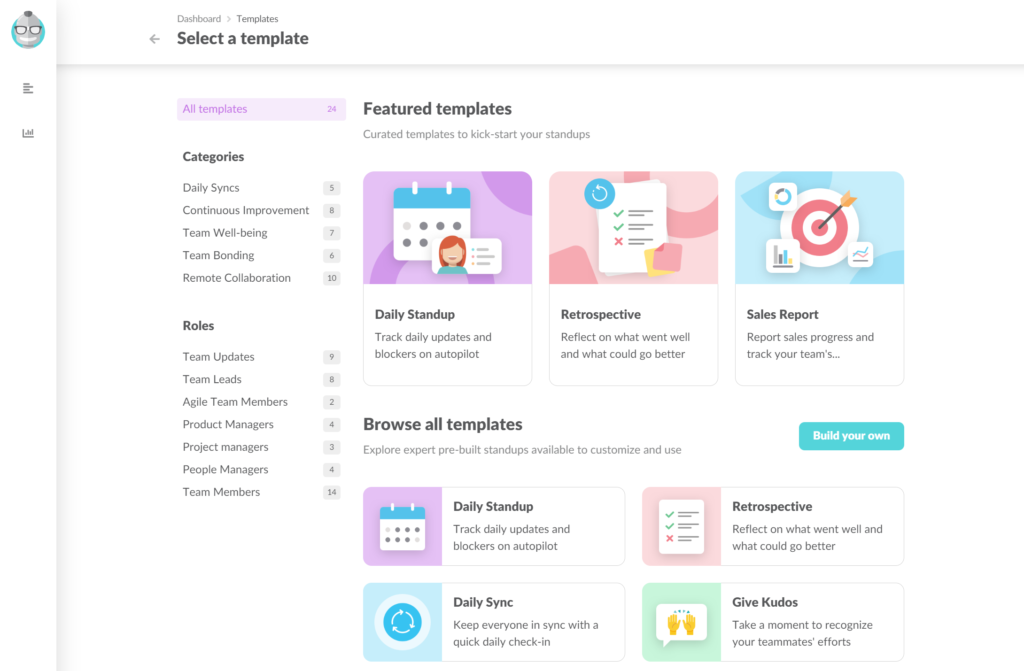
This will take you to a separate Custom Report screen, where you can start building your survey. Per the screenshot below, you can name the survey and select the channel it gets sent to.
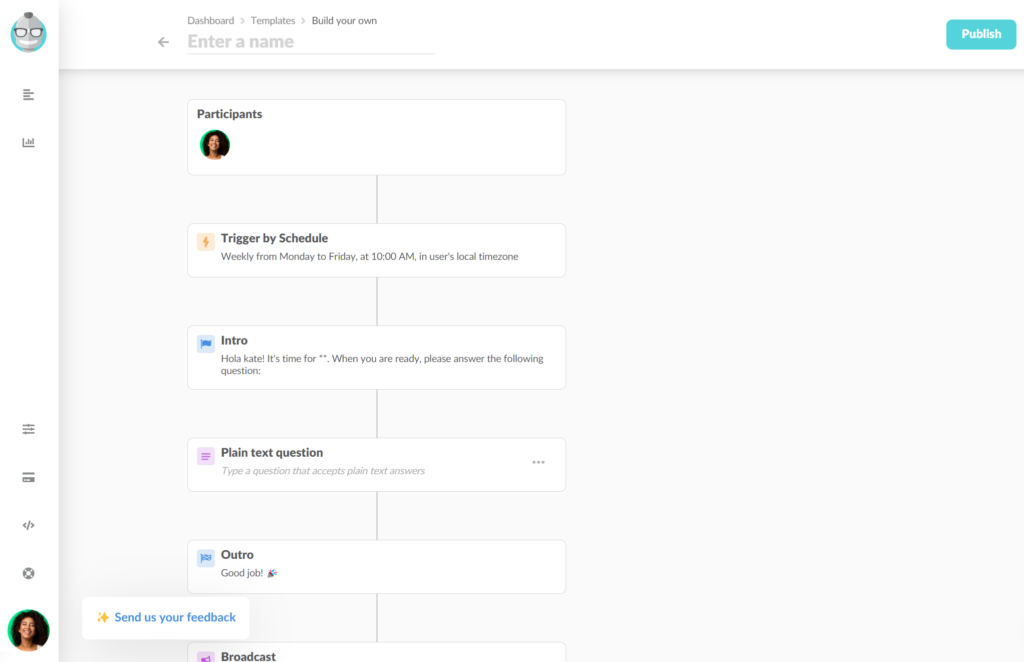
You can also make the survey anonymous by turning the toggle on:

When this toggle is enabled, participants’ names don’t appear in Microsoft Teams or in the reports after voting.
Once you’ve made the survey anonymous, you can start writing down your questions. There’s no limit to how many questions you can add.

If you want to use different response types, click on the small cogwheel and select “Answer type”.
This will take you to a new screen where you can select between several options.

For example:
- Plain text: Participants type their answers via a free response, open-ended format.
- Numeric: Participants can only respond using numbers (e.g., “On a scale of 1 to 5, how happy are you with your work-life balance?”).
- Pre-defined: Participants can select from predefined responses that you’ve provided (e.g., “When would you like to do our annual team retreat?” with predefined answers like “In August”, “In September”, etc.).
You can also use Intro and Outro messages, as shown in the screenshot below:

For example, you can ask teammates to finish the survey by a specific date with the intro and include a thank you message in the outro.
Step 2: Select the Participants or Channel
There are two ways to select who receives your surveys:
- Add each participant manually. Use this option if the survey participants aren’t grouped in a channel. Because Geekbot pulls all available names from your Microsoft Teams workspace, the names will appear in alphabetical order when you click on the “Add participants” field.
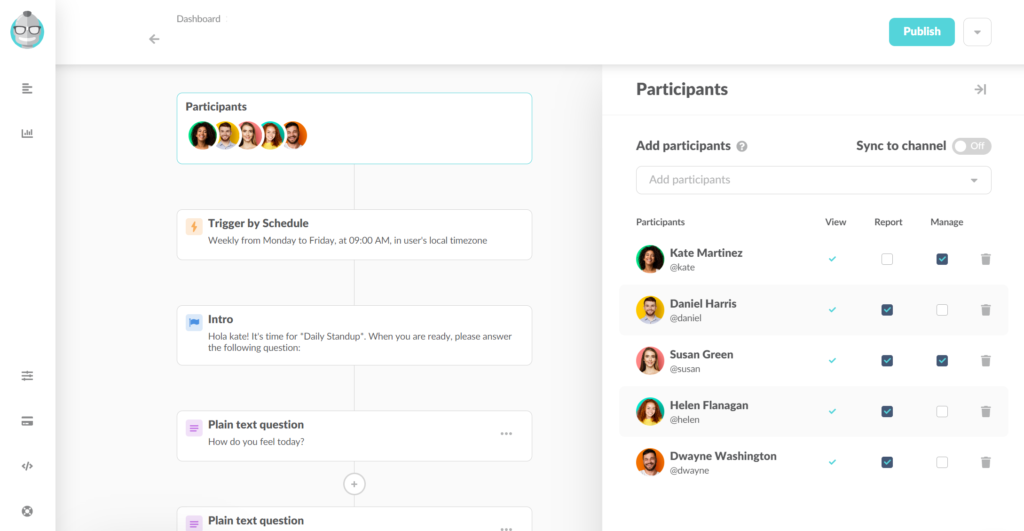
- Sync the survey to a Microsoft Teams channel. To utilize this option, simply click on the “Sync to channel” toggle and select your desired channel.
Note: As with the questions, there’s no maximum (or minimum) number of participants.
Step 3: Schedule and Send Your Survey
Next, it’s time to schedule your Microsoft Teams survey.
If you’re running a one-off survey, just select the date and time it should be sent.
For recurring surveys, alongside the date and time, you can also choose the frequency at which they get sent:
- Daily
- Weekly
- 2 Week Period
- 3 Week Period
- 4 Week Period
- First week of each month
- Last week of each month
- Any other schedule

Additionally, you can also instruct Geekbot to factor in each team member’s local timezone.
Say your teammates are distributed across time zones — e.g., in London, San Francisco, and Paris — and you want everyone to receive a survey at 9:00 AM on Monday.
With Geekbot, you can select 9:00 AM as the time and set the “Timezone” option to “User’s local timezone”. This ensures everyone receives the questions at that time in their respective time zones.

Once the specified date and time comes, participants will get a DM in Microsoft Teams asking them to complete the survey.
If they receive the survey at a bad time (e.g., while in a meeting), they can set up reminders, so they don’t forget to answer the questions later in the day.

Note: These reminders aren’t intrusive to people’s work, as they’re completely optional.
Step 4: Review the Survey Responses
Geekbot lets you review survey responses directly in Microsoft Teams or in your Geekbot dashboard.
First, here’s how anonymous survey answers look like in Microsoft Teams:
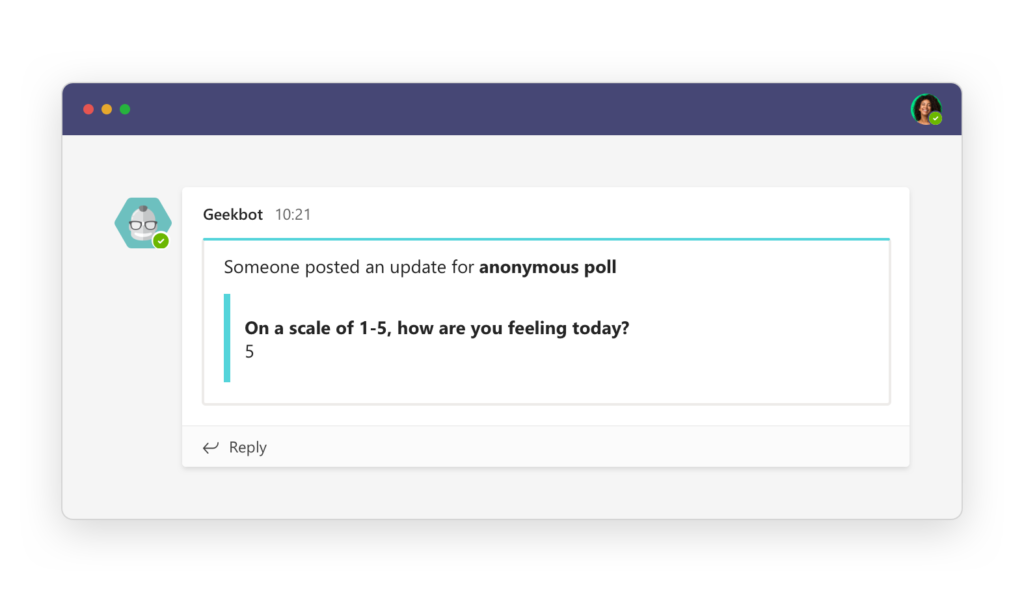
Also, here’s an example of public survey answers:
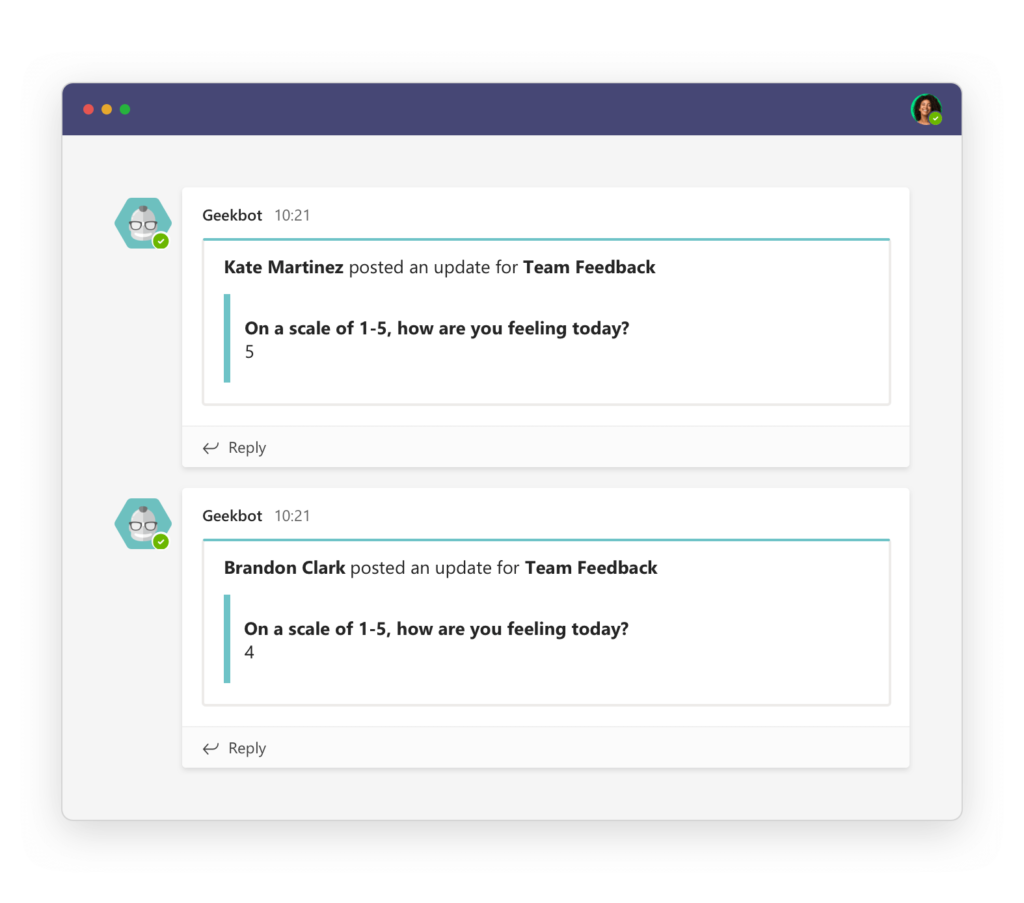
You can also view responses as a whole from your Geekbot dashboard and filter for past answers by date.
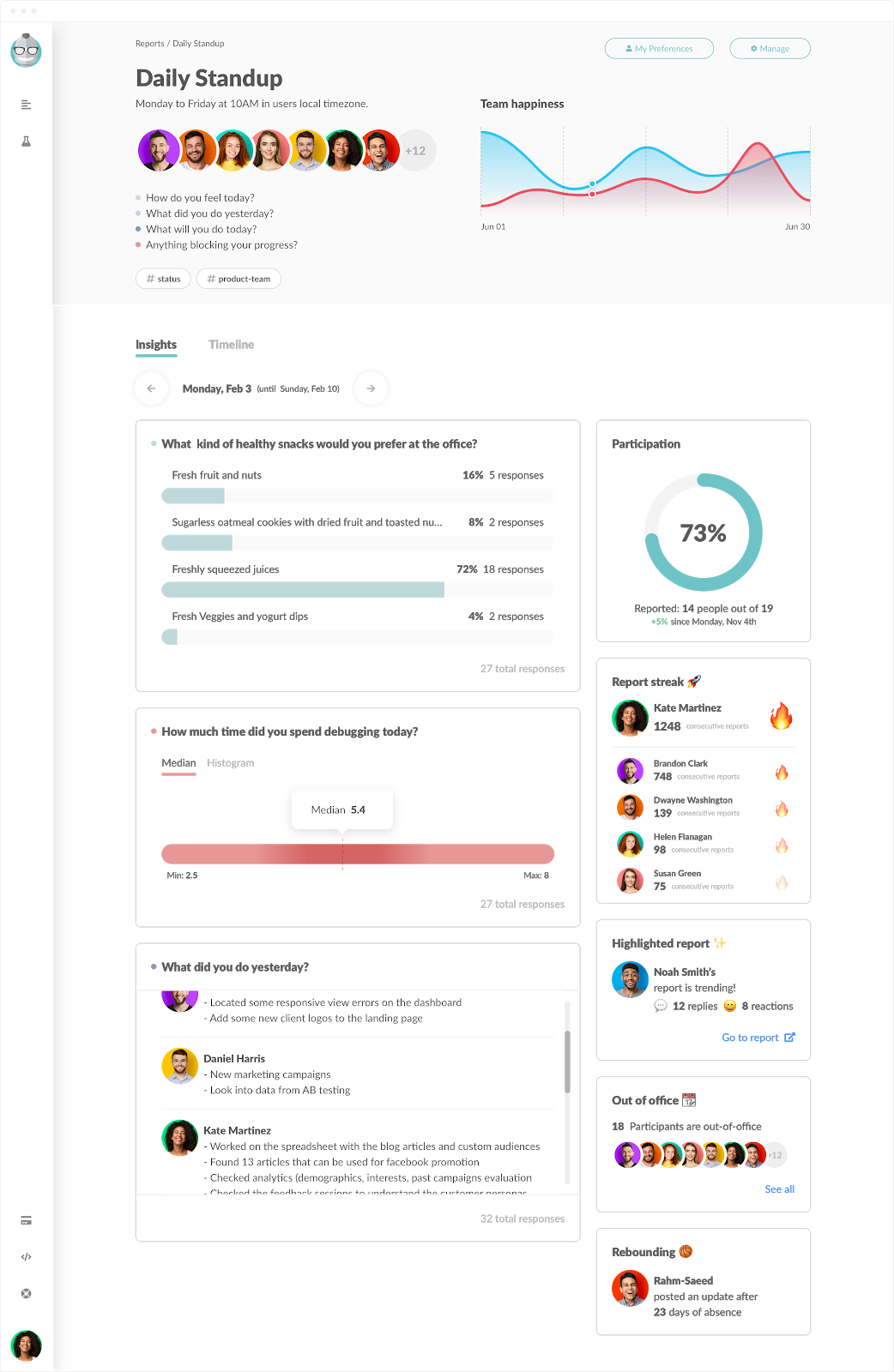
As you can see, the dashboard provides useful stats and metrics about the survey, like:
- What percentage of team members participated.
- The total number of responses.
- The most popular answers (and much more).
Again, when surveys are anonymous, participants’ names don’t show up in this report.
Bonus: Run Standups, Retrospectives, and Other Remote Work Check-Ins With Geekbot
As we’ve mentioned, Geekbot is not just a survey tool. You can also use it to run asynchronous remote check-ins, such as standups, retrospectives, and more.
Currently, Geekbot has over 170,000 happy users. You can find their reviews on Capterra, Crozdesk, G2, and Trustpilot.
If you feel Geekbot is the right tool for your needs, click here to create a free account.
2. Microsoft Forms
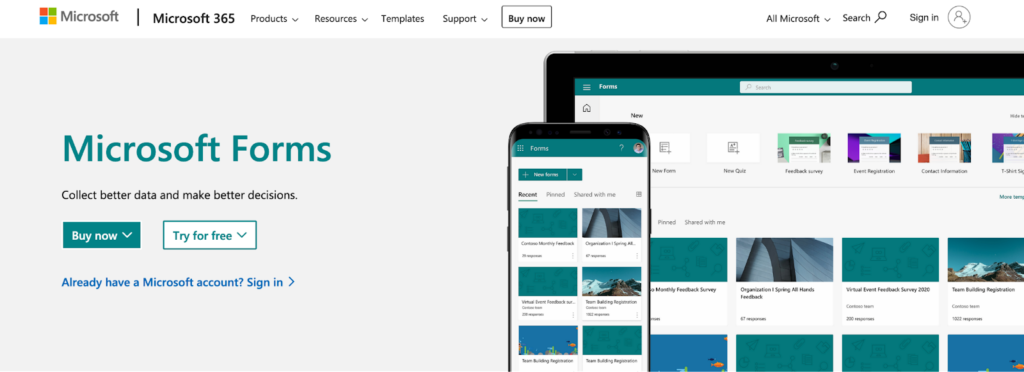
Microsoft Forms is a tool for creating online surveys, quizzes, and polls. It can be integrated with Microsoft Teams, so that you can easily create surveys, make the responses anonymous, and send them to your team.
3. Polly
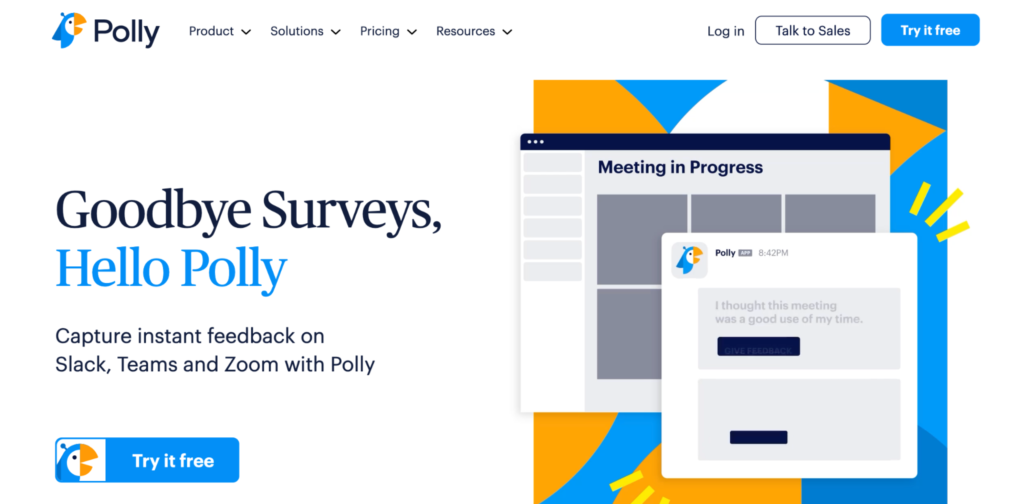
Polly is an instant engagement app for Microsoft Teams, Slack, and Zoom. You can use it to create surveys and customize how they’re sent, for example, by making them anonymous and sending them to channels or individuals.
4. SurveyMonkey
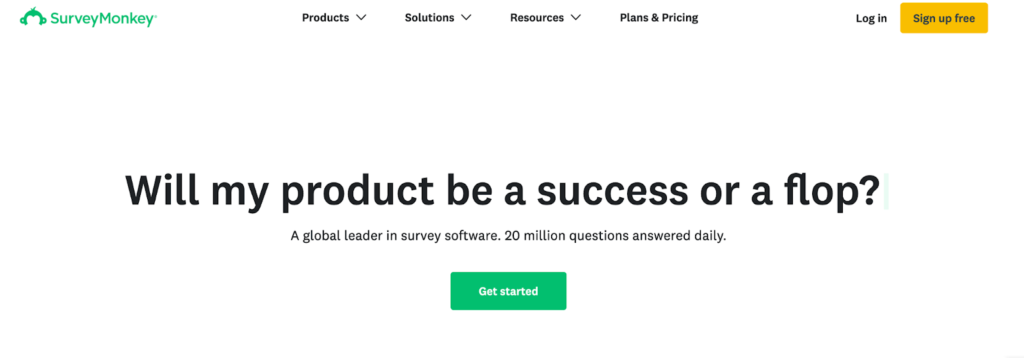
SurveyMonkey is a widely-used survey platform that helps businesses collect feedback from global audiences, as well as their customers and employees. It also integrates with Microsoft Teams, so you can use it to create and share surveys, polls, and quizzes in chats or channels.
Create a Free Geekbot Account and Run Anonymous Surveys in Microsoft Teams Today
With Geekbot, you can easily run public or anonymous surveys, standups, retrospectives, and all other kinds of remote work check-ins in Microsoft Teams.
Our tool is free for teams with up to 10 participants. For larger teams, Geekbot is $2.50 per user (on the annual plan) and $3.00 per user (on the monthly plan).
Click here to create a free Geekbot account today.
You May Also Like…
- 5 Microsoft Teams Meeting Tools (In-Depth Look)
- Daily Standup Excel/Google Sheets Template
- Getting Started with Geekbot: Tutorial Video
- Geekbot’s Use Cases
- Geekbot’s Pricing
- Geekbot’s Features and Functionality
- Geekbot’s Real-Time Product Tour
Frequently asked questions
What is the best tool for running anonymous surveys in Microsoft Teams?
Geekbot (our free tool) lets you run anonymous surveys in Microsoft Teams and customize the schedule, participants, responses types, and more.



